Potřebujeme váš souhlas k využití jednotlivých dat, aby se vám mimo jiné mohly ukazovat informace týkající se vašich zájmů. Souhlas udělíte kliknutím na tlačítko „OK“.
ASTM C203-05a(2012)
Standard Test Methods for Breaking Load and Flexural Properties of Block-Type Thermal Insulation (Includes all amendments And changes 12/13/2017).
Automaticky přeložený název:
Standardní zkušební metody pro mez pevnosti v tahu za ohybu a vlastnosti Block-Type tepelnou izolací
NORMA vydána dne 1.3.2012
Informace o normě:
Označení normy: ASTM C203-05a(2012)
Poznámka: NEPLATNÁ
Datum vydání normy: 1.3.2012
Kód zboží: NS-12518
Počet stran: 7
Přibližná hmotnost: 21 g (0.05 liber)
Země: Americká technická norma
Kategorie: Technické normy ASTM
Kategorie - podobné normy:
Anotace textu normy ASTM C203-05a(2012) :
Keywords:
breaking load, breaking strength, flexural strength, modulus of elasticity, modulus of rupture , Block and board thermal insulation, Breaking load method, Breaking strength/tenacity--thermal insulation, Flexural testing--insulating materials/applications, Modulus of elasticity, Modulus of rupture (MOR), Resistance, ICS Number Code 91.100.60 (Thermal and sound insulating materials)
Doplňující informace
| Significance and Use | ||||||||||||
|
These test methods are to be used to determine the resistance of some types of preformed block insulation when transverse loads are normally applied to the surface. Values are measured at the maximum load or breaking point under specified conditions or specimen size, span between supports, and rate of load application. The equations used are based on the assumption that the materials are uniform and presume that the stress-strain characteristics below the elastic limit are linearly elastic. These assumptions are not strictly applicable to thermal insulations of certain types in which crushing occurs before failure is obtained in transverse bending; however, depending upon the accuracy required, these procedures are capable of providing acceptable results. Test Method I is especially useful when testing only for the modulus of rupture or the breaking load. This information is useful for quality control inspection and qualification for specification purposes. Test Method II is useful in determining the elastic modulus in bending as well as the flexural strength. Flexural properties determined by these test methods are also useful for quality control and specification purposes. The basic differences between the two test methods is in the location of the maximum bending moment, maximum axial fiber (flexural or tensile) stresses, and the resolved stress state in terms of shear stress and tensile/compression stress. The maximum axial fiber stresses occur on a line under the loading fitting in Test Method I and over the area between the loading fittings in Test Method II. Test Method I has a high shear stress component in the direction of loading, perpendicular to the axial fiber stress. Sufficient resolved shear stress is capable of producing failure by a shear mode rather than a simple tension/flexural failure. There is no comparable shear component in the central region between the loading fittings in Test Method II. Test Method II simulates a uniformly loaded beam in terms of equivalent stresses at the center of the specimen. Flexural properties are capable of varing with specimen span-to-thickness ratio, temperature, atmospheric conditions, and the difference in rate of straining specified in Procedures A and B. In comparing results it is important that all parameters be equivalent. Increases in the strain rate typically result in increased strengths and in the elastic modulus. |
||||||||||||
| 1. Scope | ||||||||||||
|
1.1 These test methods cover the determination of the breaking load and calculated flexural strength of a rectangular cross section of a preformed block-type thermal insulation tested as a simple beam. It is also applicable to cellular plastics. Two test methods are described as follows: 1.1.1 Test Method I—A loading system utilizing center loading on a simply supported beam, supported at both ends. 1.1.2 Test Method II—A loading system utilizing two symmetric load points equally spaced from their adjacent support points at each end with a distance between load points of one half of the support span. 1.2 Either test method is capable of being used with the four procedures that follow: 1.2.1 Procedure A— Designed principally for materials that break at comparatively small deflections. 1.2.2 Procedure B— Designed particularly for those materials that undergo large deflections during testing. 1.2.3 Procedure C— Designed for measuring at a constant stress rate, using a CRL (constant rate of loading) machine. Used for breaking load measurements only. 1.2.4 Procedure D— Designed for measurements at a constant crosshead speed, using either a CRT (constant rate of traverse) or CRE (constant rate of extension) machine. Used for breaking load measurements using a fixed crosshead speed machine. 1.3 Comparative tests are capable of being run according to either method or procedure, provided that the method or procedure is found satisfactory for the material being tested. 1.4 These test methods are purposely general in order to accommodate the widely varying industry practices. It is important that the user consult the appropriate materials specification for any specific detailed requirements regarding these test methods. 1.5 The values stated in SI units are to be regarded as the standard. The values given in parentheses are provided for information only. 1.6 This standard does not purport to address all of the safety concerns, if any, associated with its use. It is the responsibility of the user of this standard to establish appropriate safety and health practices and determine the applicability of regulatory limitations prior to use. For specific precautionary statements, see Section 11. |
||||||||||||
| 2. Referenced Documents | ||||||||||||
|
Podobné normy:
Historická
1.9.2011
Historická
1.4.2011
Historická
15.5.2011
Historická
1.9.2010
Historická
1.9.2012
Historická
1.5.2008
Odebírejte informace o nově vydaných normách ZDARMA:
Chcete pravidelně odebírat informace o nově vycházejících normách z celého světa a to zcela zdarma?
Přihlašte se k odběru. Vše je velice jednoduché a absolutně ZDARMA.
Na výběr máte vydavatele z celého světa.



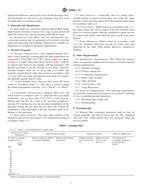 ASTM C764-11
ASTM C764-11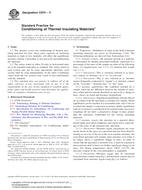 ASTM C870-11
ASTM C870-11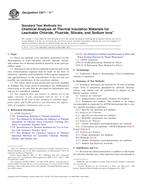 ASTM C871-11e1
ASTM C871-11e1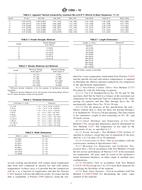 ASTM C892-10
ASTM C892-10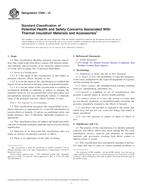 ASTM C930-12
ASTM C930-12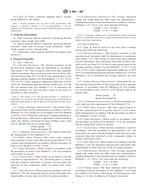 ASTM C991-08e1
ASTM C991-08e1
 Cookies
Cookies
